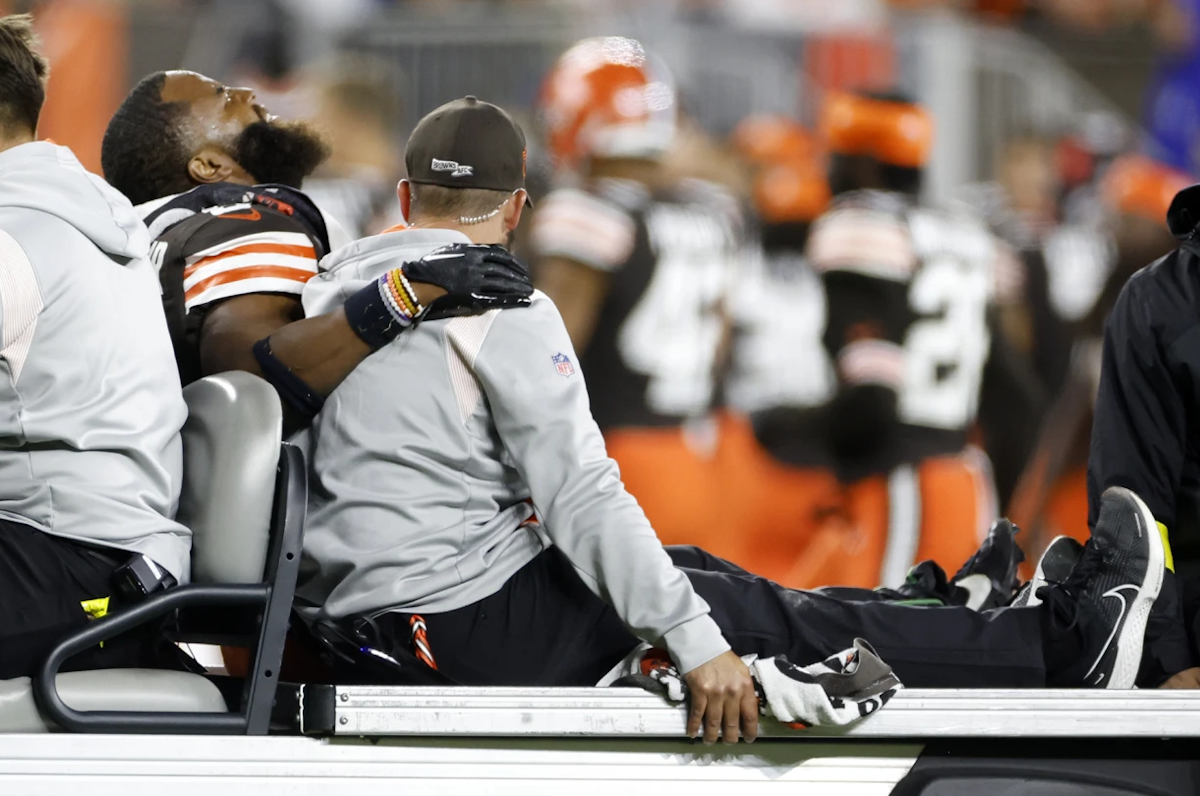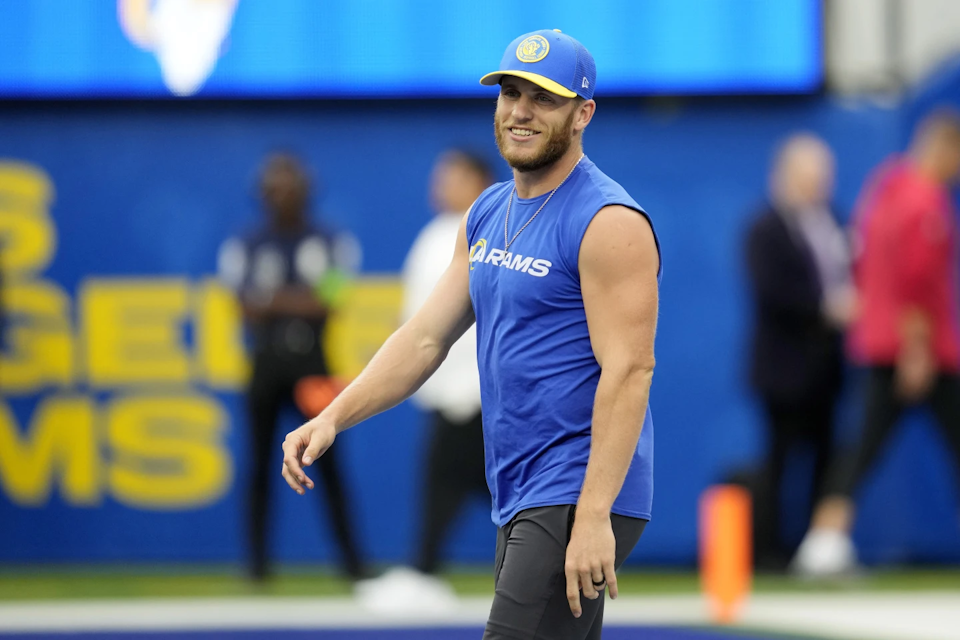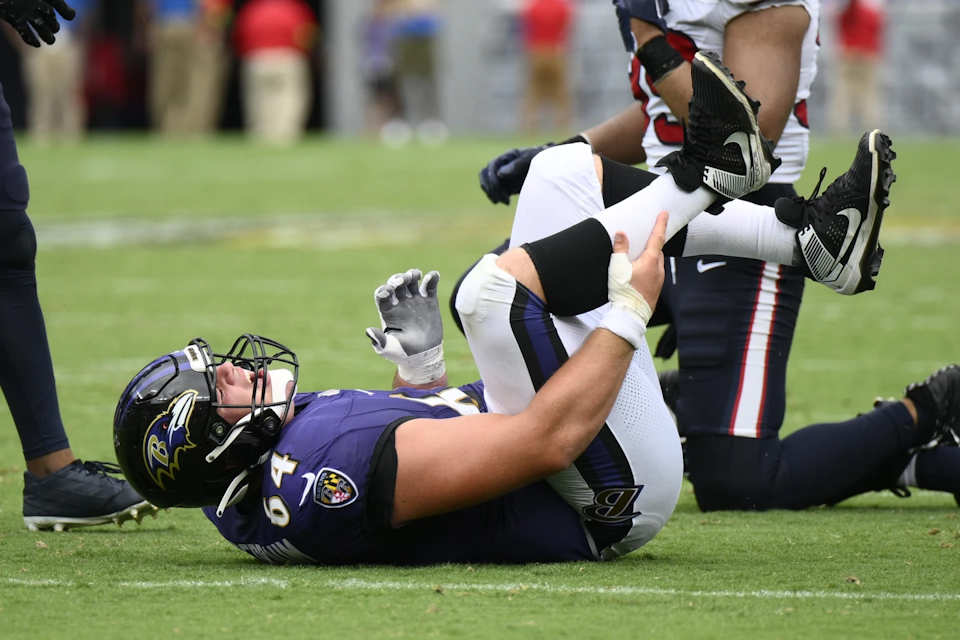The NFL is making data-driven progress on leg muscle injury prediction and prevention

By Dave Campbell
MINNEAPOLIS (AP) — The NFL ‘s health and safety initiatives focus heavily on concussions, the face of football’s ever-present danger.
Torn knee ligaments are instant headlines, ending seasons for star players in a split second.
There’s an even bigger thief of time lurking within every team in the league.
Lower extremity injuries — those pesky and painful strains of the leg muscles — outrank all of the others in cumulative absences from practices and those precious 17 games on the schedule. The NFL has thus committed millions of dollars to better predict and prevent them — and their recurrence.
“I don’t think a lot of people thought of this as a really big-ticket injury five or 10 years ago,” said Dr. Christina Mack, a chief scientific officer at IQVIA, the health data firm that conducts third-party injury analysis for the league. “While it doesn’t keep them out for the rest of the season, it’s a highly impactful injury that does prevent players from playing. Then they need to manage the injury, their rehabilitation and make sure they don’t have a recurrence. As we talk to the teams about it, we tell them, ‘Reducing strains is a winning strategy.’”
Just ask Cooper Kupp.

Los Angeles Rams WR Cooper Kupp warms up prior to game against the San Francisco 49ers Sept. 17, 2023. AP Photo/Ashley Landis
The MVP of the Super Bowl for the 2021 champion Los Angeles Rams, Kupp’s comeback from a severely sprained ankle that cut short his 2022 season was derailed by a hamstring strain that forced him out of practice on Aug. 1. He traveled to Minnesota to see a specialist after a setback. Then he was placed on injured reserve, requiring him to miss at least the first four games.
This season, 36 different players have landed on the inactive list for at least one game after appearing on the league-mandated report during the week with a leg muscle injury, including 28 for hamstrings, according to an Associated Press review.
In Week 1, 43 players landed on the injury report with either a hamstring, calf, groin or thigh problem, and 22 of them didn’t play in the game. For Week 2, there were 50 such players and, again, 22 of them were inactive. Atlanta specialist Cordarrelle Patterson (thigh), Dallas left guard Tyler Smith (hamstring), Dallas safety Donovan Wilson (calf) and Green Bay wide receiver Christian Watson (hamstring) are among the regulars who’ve yet to play because of leg muscle trouble.
Progress is being made, though.
Last season, overall injuries were down by 5.6% and preseason injuries hit a seven-year low the NFL, attributed largely to the reduction of these leg muscle injuries.
Informed by the data harvested and analyzed by IQVIA, the league last year tightened up preseason practice time limits for the first four days on the field and again for the first four days of padded workouts. Players were required to wear biomechanical sensors during the ramp-up periods for further analysis during that critical window. What resulted was a 26% decrease from 2021 in leg muscle injuries reported during the first two weeks of training camp and a 16% drop for the entire preseason.
The scientific advisory board created in 2016 by the NFL, which has spent most of its $40 million on concussion research, awarded a $4 million grant in 2021 for a four-year study of hamstring prevention and treatment that was launched by a team led by University of Wisconsin researcher Dr. Bryan Heiderscheit. Nearly three-quarters of all hamstring injuries in the league result in missed time.
Anyone who’s ever tried to run fast without a proper warmup can attest to the vulnerability of the hamstring in a quick-burst sport such as football. The muscle crosses both the knee and the hip, for one, making it more susceptible to trouble.

Baltimore Ravens C Tyler Linderbaum (64) lies on the field injured during game against the Houston Texans, Sept. 10, 2023. (AP Photo/Nick Wass)
Research has found that during acceleration from 80% to 100% of an athlete’s sprint speed, the amount of mechanical energy the muscle must absorb increases by 50%.
“That’s a big change in load on that muscle. It all of a sudden has not experienced that sort of load in quite some time and it may not be ready for it,” Heiderscheit said. “What we strongly encourage all athletes to do is to make sure they respect speed and train at that full intensity enough where your muscle is conditioned for it.”
Roughly 400 players from BYU, Indiana, North Carolina, Notre Dame and Wisconsin are being studied for three years each by Heiderscheit’s team, using baseline offseason measurements such as sprint mechanics for all participants and deeper dives on those players who injure their hamstrings including MRI exams and post-rehabilitation strength tests. With assistance from the American Medical Society for Sports Medicine, the data has been de-identified to keep competing teams from virtually spying on each other and won’t be widely shared until the four-year project is finished, Heiderscheit said.
The hamstring study is just one snapshot of the NFL’s widespread use of science and technology to try to keep players as healthy as possible, gains that are so desirable that all 32 clubs in this ultra-competitive league have committed to sharing as much data as possible.
“The big point was that no individual club could collect enough information based on their 90-man roster and ultimately their 53-man roster that would provide sufficient insight fast enough that they could make changes for the health of their players,” NFL executive vice president Jeff Miller said.
“If you multiply what one team can do by 32 and the league is able to aggregate all of that information, we have a vastly greater data set that can provide us insights and opportunities to help the clubs change behavior.”
Each offseason, IQVIA’s researchers make the rounds with each club to discuss findings and plot strategy for injury prevention. The data collection has become almost a year-round exercise for teams and players as they try to find as many advantages as they can in the never-ceasing challenge of staying healthy.
“Obviously, soft tissue is something that is never going to go away,” said Cleveland Browns linebacker Anthony Walker Jr., who suffered a season-ending quadriceps injury last year on a seemingly routine play.
“You can train as much as you want and go through the whole thing, but there’s nothing you can do to replicate actual football and reaction, so I think the league is trying to figure out the best science. You see the rest days, the load management during training camp, backing guys down a little bit. I think the league and the teams are doing a great job.”